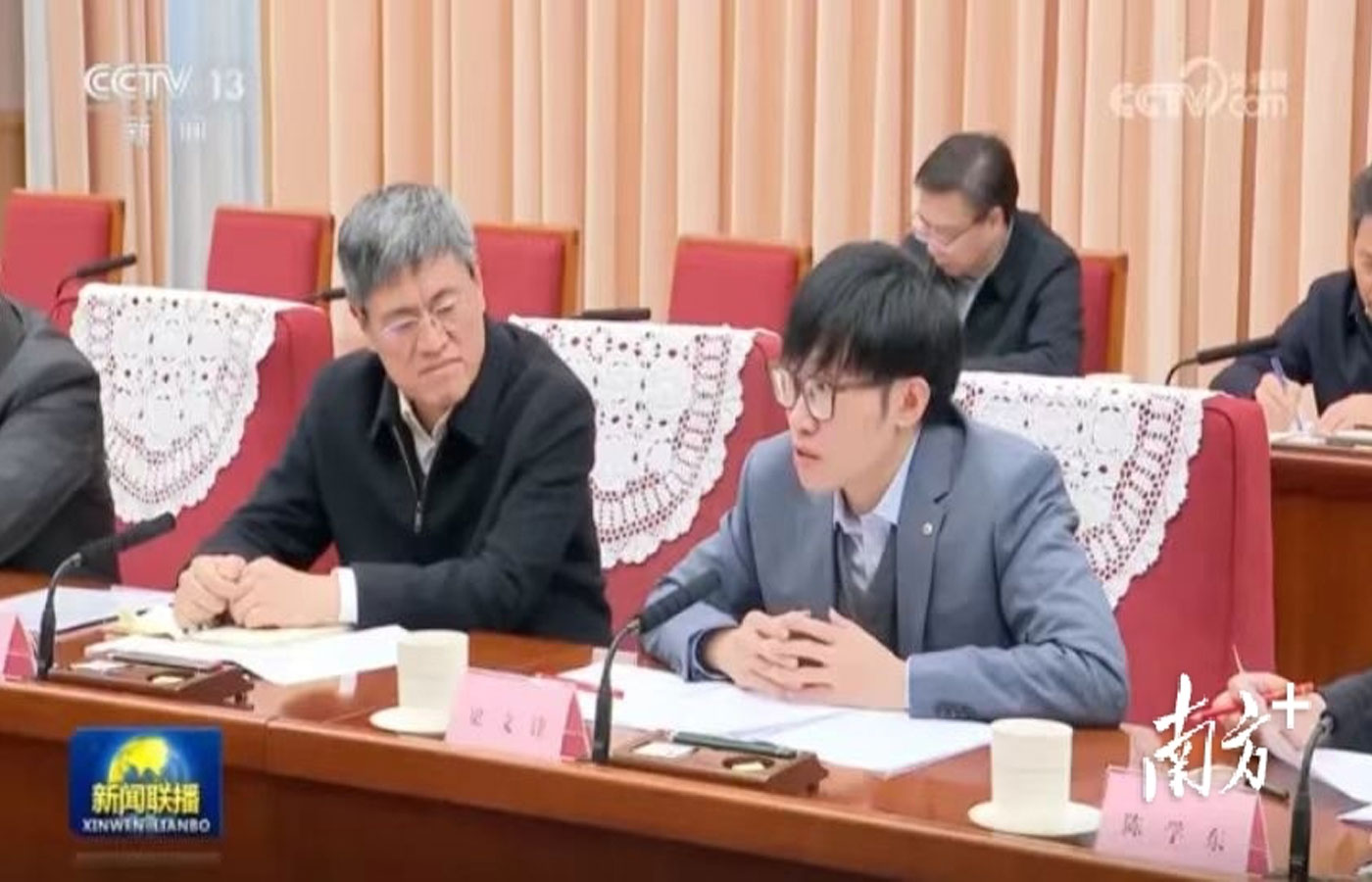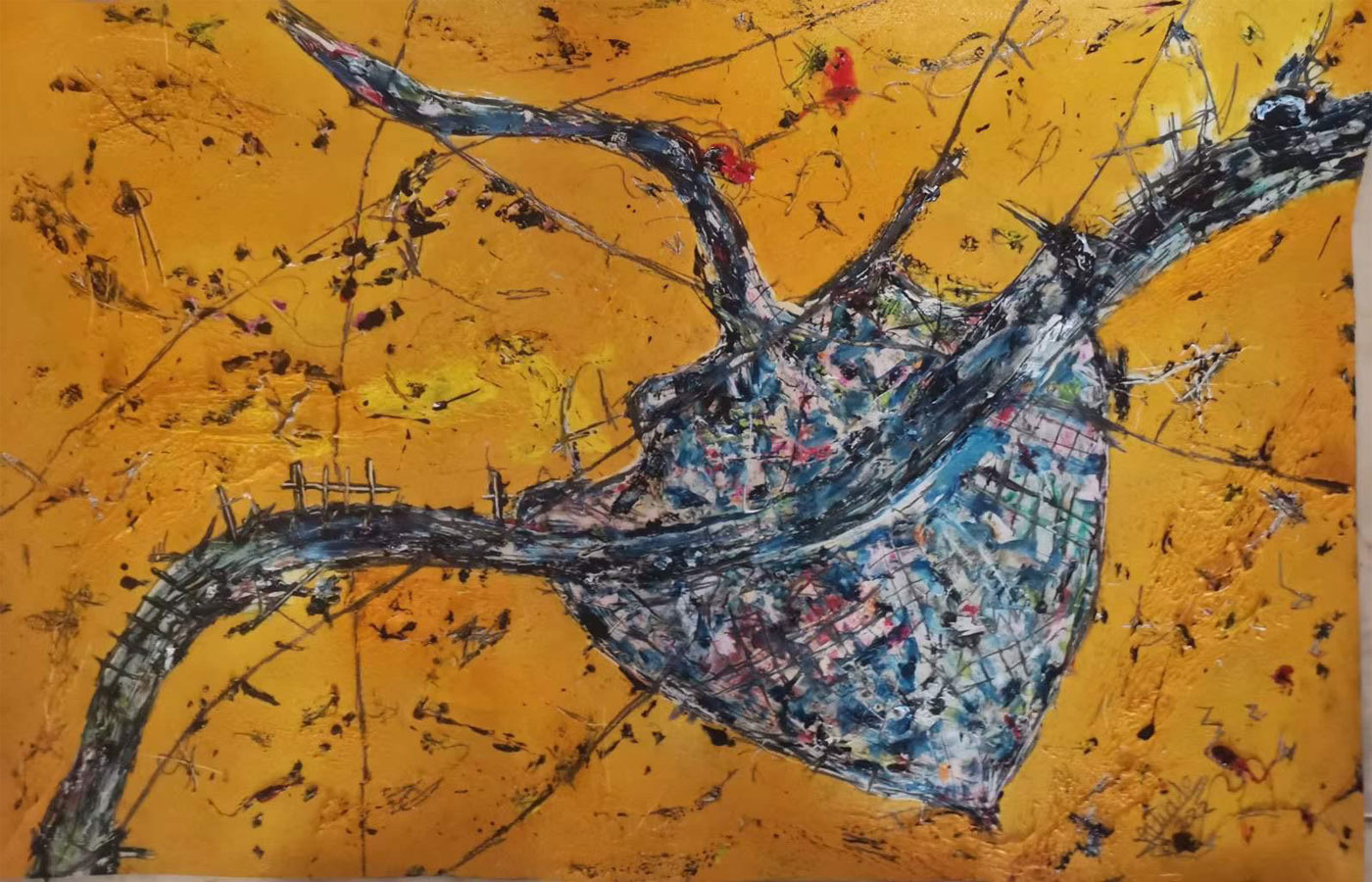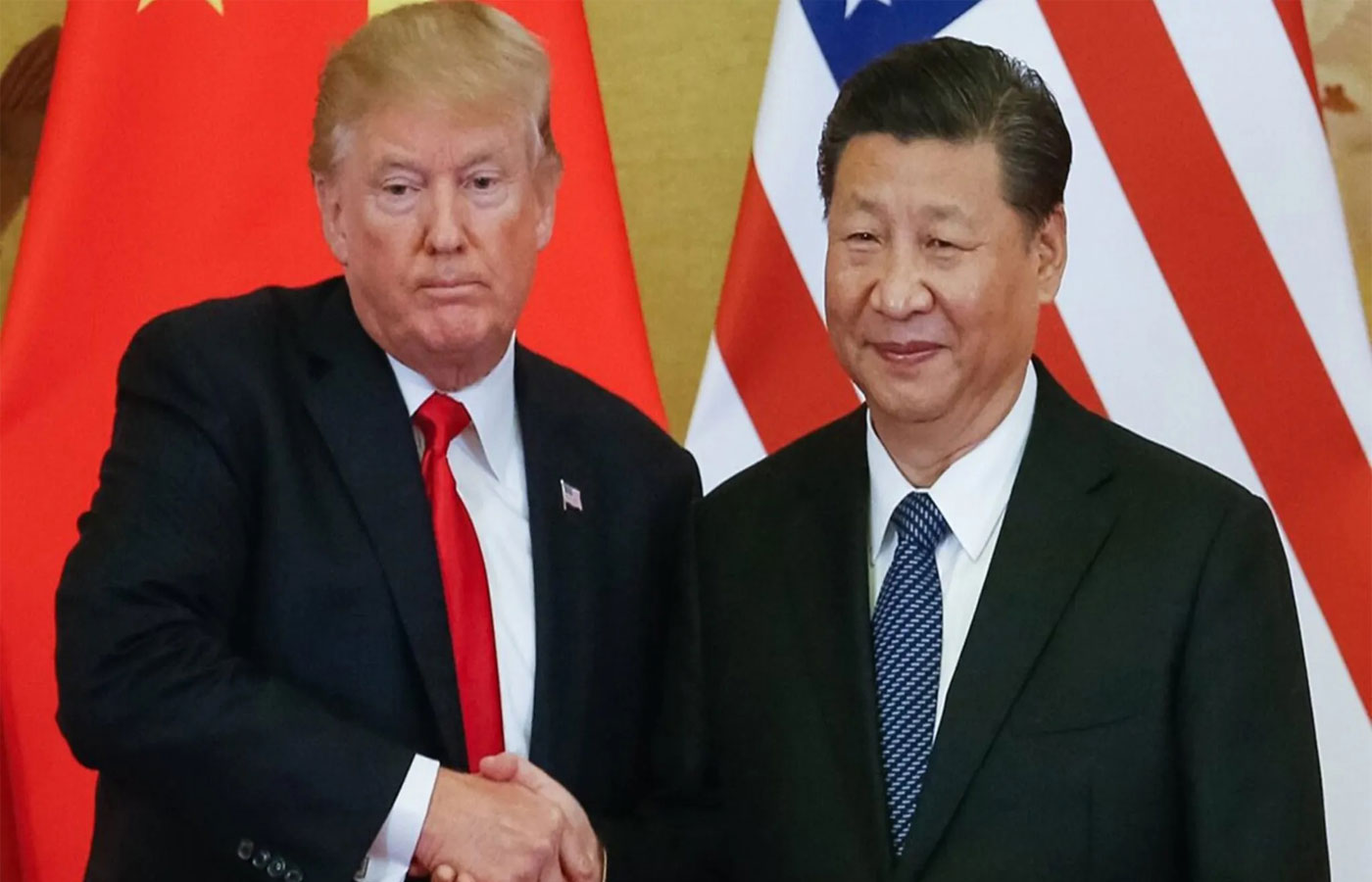It’s time to build consensus on how harmful US corporate-led democracy is and make some historic justice with China by understanding the whole-process people’s democracy.
The same day the 14th National People’s Congress of China initiated its 3rd annual session at the Great People’s House, US President Trump gave a speech at the joint session of US Congress.
The most important annual political event in China was kicking off with hundreds of deputies descending on Beijing in an exciting mood, while an unsettling and tense atmosphere took over the US Congress.
An image from Trump’s speech on March 5 made the news: Democrat lawmakers holding up signs in protest against Trump 2.0. It made me wonder: Is this what liberals mean by “checks and balances” – the system they so often praise as a safeguard against the concentration of power?
I would like to share a few thoughts on what I’ve been learning in China about what they call the whole-process people’s democracy. But before delving into that, I want to take a short detour to reflect on what has been happening to US democracy.
And I wanted to do it, not because I want to discuss internal affairs of the United States, but rather because it is time for us in Latin America to stop echoing the United Staters when they refer to their system as “exceptional”, the “strongest”, “the most free” or the “greatest” democracy in the world. And maybe we can make more efforts and try to understand and learn more from a system responsible for one of the biggest achievements in the history of humanity, lifting 800 million people out of poverty in 4 decades.
Of course the self-perception mentioned before is not at all unanimous in the US, surely more than a few people in the US see their democracy as dysfunctional, flawed, corrupted, and totally corporate-centered.
A deficient health system at risk
Getting back to the Democrat protests during Trump’s speech, one of the signs reads “Save Medicaid”. Medicaid is a public health insurance program designed to provide access to health services for low-income individuals. It was created in 1965 by Lyndon B. Johnson together with Medicare, the same type of program but specifically for seniors. These are two of the four main public health insurance programs in the US, the other two being: Children’s Health Insurance Program (CHIP), and Affordable Care Act (ACA) Marketplace plans.
According to data from the program itself, up to 2023, the percentage of the US population enrolled in Medicaid or CHIP programs was 27.8%, almost 93 million people. As of October 2024 there were 79.3 million people enrolled in one or the other, with 37.6 million being children or adolescents.
Of all the women that gave birth in 2023 in the United States, 41.5% were covered by Medicaid, according to The March of Dimes. The program is used by ⅓ of people with disabilities in the country, which means 15 million people.
So, there is no doubt these programs play a role in providing access to healthcare for people in the US, regardless of the assessments one could make of whether this is an ideal model for a healthcare system or not.
Medicaid underwent an expansion mechanism in 2010, with the Affordable Care Act (ACA), popularly known as Obamacare. Republicans were against it from the beginning.
Trump tried to repeal it in his first term, but failed. In part, because not all republicans agreed with getting rid of the program, and because there wasn’t also consensus on a proposal that could replace it.
Last year, the number of people enrolled in the program sum up to 21 million. Since the campaign last year, Trump and his allies already needed to state that they are not aiming to cut funds from Medicaid.
It’s a long issue to detail here, but essentially, the budget passed by the House – where Republicans hold a majority, as they do in the Senate – proposes USD 4.5 trillion in tax cuts and to eliminate USD 2 trillion from government spending through 2034.
The text specifies that 11 committees have to submit changes to increase or reduce their deficit. Medicaid is under the House Committee on Energy and Commerce, which needs to reduce the deficit “by no less than USD 880 billion for the period of fiscal years 2025 through 2034.”
The outlays under the jurisdiction of the aforementioned committee for 2025-2034, excluding Medicaid and CHIP, sum USD 381 billion over the 10‑year period, according to the Congressional Budget Office. So, to achieve the USD 880 billion goal, these programs would have to suffer cuts.
Trump could end up failing again.
Chronic domestic problems unaddressed
In case that happens, some defenders of US democracy could say: there you go, these are our “check and balances”, because some Republican representatives are afraid of going against their constituents.
But the mere fact that the whole country is focused on discussing how to avoid the worsening of an already very deficient health system is in itself a problem.
The United States has huge problems. I’m not talking about the problems that they cause in the world, but the ones that they cause on their own people: each year school shootings with kids killed are increasing. There are already at least four this year. In the first decade 21st Century mass shootings in the US were not over 1 digit. In the last decade every year there have been dozens of mass shootings. And this is only a fraction of a much bigger gun violence problem, which takes the life of tens of thousands yearly in the United States. In 2024, 47,000 people were killed by guns in the country.
Housing is a serious issue in the US. From 2023 to 2024, there was an increase of 18% of homelessness, 771,480 people were recorded homeless in 2024, the highest figure ever recorded.
The country spends from 15 to 18% of its GDP on healthcare, higher than countries like the UK and Germany, and still has the “worst-performing health system among all high-income countries”.
Are there clear solutions in the “perfect” democracy of the US for getting out of this? It doesn’t look like it.
Massacres in the US as a result of gun violence are a shame to the world, not only to the US. It is a humanitarian crisis. But Democrats have little more than words to address such a crisis. And, of course this is under the assumption that they are willing to seriously address these crises.
The holding of signs during Trump’s speech is not only pathetic because it is useless, but because it tried to perform as a way of “resistance”, when it is actually standing by a program that guarantees that five for-profit companies hold half of the Medicaid MCO Market and in the end does not efficiently solve people’s real problems.

People’s democracy is a process
This was my second time covering the Two Sessions. One of the most important days is when the government delivers the report to the NPC. Before the prime minister starts his presentation on the government report, you have a chance to talk to some of the almost 3,000 deputies circling at the entrance of the Great People’s Hall.
A short explanation, the Chinese Two Sessions are the annual meetings of the National People’s Congress (NPC, a unicameral body) and the Chinese People’s Political Consultative Conference, an advisory body composed of parties (in addition to the Communist Party of China, there are eight other parties), personalities without party affiliation, popular organizations, ethnic minorities, among others.
In the Two Sessions the government has to present a work report before the NPC, the highest organ of the state in China.
Renowned Chinese journalist and dear friend Jingjing, helped me to talk to some deputies. We had a joint interview with a representative from Yunnan province. He was a little nervous. A small farmer, local leader, one of the almost 3,000 deputies present at the most important annual political event of one of the world’s leading countries and as part of its highest political body.
In a recent discussion, Professor Lu Xinyu – a distinguished scholar at East China Normal University (ECNU) – noted that some observers in the West (or global north) often dismiss the Two Sessions as mere “political theater”. “Everyone raising their hand like they were agreeing,” they would say. Then she proceeds to explain how wrong they are about China’s political system: the national Two Sessions are the result, not the beginning of the process.
There is the national level of the “Two Sessions”, but the system is present in all local governments, in the provinces, counties, townships, etc.
Professor Lu explains that the representatives and members of the local committees must collect and organize information on issues related to the socio-economic and cultural development of their regions, as well as specific demands.
After that they will present them in their Two Sessions in the form of proposals. There are issues that need to be solved locally, other ones will be addressed by the national deputies of the Two Sessions.
Bottom-up democracy
The key takeaway is that China’s political structure is essentially a grassroots democracy. While Xi Jinping’s family is part of the party, he does not share the affluent background typical of many prominent figures in current US politics. In contrast, Elon Musk, the wealthiest individual in recent history, seems to navigate the US Oval Office as if he were an elected official.
Chinese people would only enter in the Great People’s Hall for political duties only if they received the mandate from the people.
This year I also participated in one of the delegation’s open sessions. The day after the government presented its work report, each province or region had their meetings to discuss the reports and to present their own results, goals and challenges for the year.
I had the opportunity to interview Ms. Wang Yinxiang, one of the deputies from Shandong province. She is a small farmer and a village party secretary. I asked her about the importance of the concept of the whole-process people’s democracy. Here is her answer:
“Democracy in China is a comprehensive process that fully values the opinions of people from all walks of life and sectors of society, allowing everyone to understand and participate. I am a representative of the peasants, coming from the grassroots. You can see that our representatives come from diverse professions and sectors, reflecting different perspectives and backgrounds. This allows us to observe how the Party and the government serve the people.”
One fundamental thing is that the Chinese political system is also results-oriented: If there is a problem, they need to address it. Local people will complain with their leaders or the leaders will know and communicate and discuss the problems at a local level and higher levels.
Of course, this can only work because of the centrality of the Communist Party of China. For comparison, you will never have a gun violence problem in China, because no corporation is above the CPC, and the CPC is people-oriented, not profit-oriented.
“Proposals should follow the ‘one question, one discussion’ principle: what is the problem and what are the possible solutions? Representatives and committee members must carry out in-depth investigations, communicate with relevant departments, and take responsibility for the scientific feasibility of proposals. Governments at all levels must respond to the proposals put forward,” explains Lu.
The other key element is: consensus. While the discussions are taking place at the local levels, “it is necessary to build the greatest possible consensus so that the proposals can be implemented effectively,” says professor Lu.
One principle is to respect the differences. China is a very diverse country. Let’s take for instance democracies in Europe. France restricted women to use the “hijab” and now Spain is discussing whether to prohibit women from using it.
Although the CPC doesn’t profess any religion, I wouldn’t see them making some decisions like the ones Europeans are doing. Instead what I saw is the government funding monasteries because, in this case, buddhism is an important cultural aspect of the Chinese people.
There are no empty words in the government report. “Every sentence in the government work report is backed by a complex engineering system,” explains Lu.
Tasks and goals proposed in the “‘Two Sessions” are like military orders addressed to the nation and the world, which must be fulfilled without fail.
We didn’t talk about the sort of comparison that I wanted to do here. Still, she gave the best summary of what I was thinking:
“This is not a game for politicians to win votes. Fights between politicians in parliament do not mean democracy, but only that democracy is not solving the problems.”
Frequently, Chinese representatives emphasize that the Chinese system is a model developed for China – Socialism with Chinese Characteristics.
Just as its cooperation policies impose no conditions or demands, China maintains a stance of not seeking to “export” its political system.
However, for Brazil and Latin America in general, it would be beneficial to deepen our understanding of China’s political system, much like how China itself has drawn lessons from various countries and regions, including Brazil, during its industrialization process.
In our interview with President Dilma Rousseff last year, she stated that Brazil needs its own distinct path, but emphasized that “the Brazilian path is not one of anti-communism.”
Some weeks ago, during its press conference at the Two Sessions, Foreign Minister Wang Yi correctly remarked that Latin American countries do not wish to be the “backyard” of any other nation.
Understanding and learning from Socialism with Chinese Characteristics is an opportunity our Latin American nations should increasingly explore, without hesitation.
Source: Peoples dispatch










